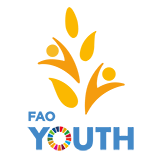WFF Youth Assembly and UN Food Systems Coordination Hub convened regional consultations to shape the future of food systems

From 15 to 28 March 2025, over 1200 young leaders across six global regions came together for the World Food Forum (WFF) Youth Assembly’s regional consultations for food systems transformation. Held in collaboration with the United Nations Food Systems Coordination Hub (the Hub), these virtual consultations marked a major milestone in the lead-up to the second United Nations Food Systems Summit Stocktake (UNFSS+4) in July 2025.
Participants engaged in dynamic discussions on youth-led solutions to some of the most pressing challenges facing our food systems, like climate resilience, food security and equitable governance.
In Africa, youth emphasized the importance of operationalizing the Water-Energy-Food Nexus. Kenya’s Solar Freeze, a solar-powered cold storage solution paired with farmer training, was highlighted as a model for reducing post-harvest losses. Digital literacy programmes such as Nigeria’s FarmCorps offer young farmers mobile-based weather forecasting and market access. Gender equity was another key theme, with Malawi’s women’s land rights initiative serving as a model for ensuring secure land ownership for women. Youth also called for climate-focused funding to scale agroecology enterprises like Ghana’s Green Impact Farms.
In Asia and the Pacific, outdated land policies and limited access to technology were flagged as major barriers to youth innovation. However, solutions like the Philippines’ Agri-Tech Youth Hubs provide drone-based crop monitoring training showcased scalable opportunities. Youth also spotlighted Fiji’s Reef Guard, an initiative that combines coral restoration with Indigenous fishing practices to strengthen marine food security. India’s Kisan Mitra app, which delivers real-time market price data to smallholders, inspired broader discussions on regional digital platforms. Participants also advocated for intergenerational policymaking, referencing Nepal’s National Youth Council as a strong institutional example.
In Europe and Central Asia, transparency in food production emerged as a priority. Youth called for standardized food labeling to include both nutritional content and environmental impact. They also highlighted innovative urban agriculture practices, such as rooftop gardens in Kyiv, Ukraine and composting initiatives in Belgrade, Serbia. Indigenous Sami communities in Scandinavia shared insights on reindeer herding practices that balance ecological stewardship with food security. Participants also urged governments to fund digital literacy programmes, enabling rural youth to leverage Artificial Intelligence (AI) tools for precision farming.
In Latin America and the Caribbean, youth addressed the pressing challenges of rural connectivity and financing. Ecuador’s AgroJoven Fund, which supports young farmers with microloans and mentorship, was praised as a replicable model. Chile’s Ley de Juventud Rural, guaranteeing youth seats in agricultural decision-making spaces, sparked calls for regional institutional reform. Indigenous Mapuche youth in Chile emphasized the role of ancestral crops like quinoa in climate adaptation, urging governments to subsidize traditional farming practices. Coastal communities globally advocated for AI-driven fishery management tools to protect marine ecosystems.
In the Near East and North Africa, youth highlighted barriers to gender equity, particularly around land ownership and governance. Participants advocated for inclusive policies like Tunisia’s Youth Climate Parliament, which mandates youth participation in climate bodies, and Egypt’s Fresh Source, a youth-led initiative using Internet of Things sensors to optimize water use. Blockchain technology was proposed to improve supply chain transparency, while Indigenous knowledge systems such as Algeria’s foggaras (ancient irrigation system) were recognized as essential to building resilient agrifood systems.
In North America, rising food prices and inefficient distribution systems disproportionately affect low-income and Indigenous communities. Canada’s Second Harvest, which diverts surplus food to vulnerable households, and California’s Farm-to-School Act, promoting local sourcing, were successful examples of curbing the issue. Innovations such as the Too Good To Go app highlighted the role of digital solutions in reducing waste. Young participants also advocated for regenerative agriculture policies and stronger support for Indigenous communities.
The consultation insights will guide the development of a survey to shape priorities and inform the drafting of an initial youth declaration.
This draft will be refined at the Preparatory Youth Conference for the UNFSS+4 in Bangkok in May 2025, where young people from diverse backgrounds will discuss regional and national priorities, policy gaps and youth-led solutions to food systems challenges. This preparatory conference aims to strengthen the declaration’s focus on actionable steps. The final youth declaration will reflect a unified global youth voice. It will be presented at the UNFSS+4 in July 2025 in Addis Ababa, Ethiopia, urging leaders to adopt youth-driven solutions into food systems policies and actions worldwide.




